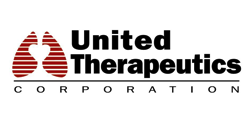

Washington, D.C.–based cybersecurity investment firm Strategic Cyber Ventures released its first annual report on The State of 2018 Cybersecurity Investing that includes some key findings about the DMV.


Washington, D.C.–based cybersecurity investment firm Strategic Cyber Ventures released its first annual report on The State of 2018 Cybersecurity Investing that includes some key findings about the DMV.


2019 has kicked off with a wave of innovative health care solutions highlighted at mega-conferences like CES and the J.P. Morgan Healthcare Conference – from the introduction of the first wearable blood pressure monitor to virtual home health care for seniors to online vision tests allowing patients to renew prescriptions from anywhere at anytime. We are truly living through an age of disruption spurred by technological advances.


United Therapeutics Corporation (Nasdaq: UTHR) today announced the closing of the transactions contemplated by its license agreement with Arena Pharmaceuticals, Inc. (Nasdaq: ARNA). Under the agreement, United Therapeutics acquired exclusive, worldwide rights to develop and manufacture the Phase 3 investigational drug candidate ralinepag, a next-generation, oral, selective and potent prostacyclin receptor agonist in development for the treatment of pulmonary arterial hypertension (PAH). Upon closing, United Therapeutics paid Arena $800 million. Arena is also entitled to potential milestone payments of up to $400 million based on the achievement of certain regulatory events as well as low double-digit tiered royalties on annual net sales of ralinepag products.


We need to chart a new course.


Cell therapy offers a treasure chest of new medicines, but there is still much to learn about cell activities and how to deliver these potential benefits before science and the industry can fully fulfill on their promise. One of cell therapy’s earliest pioneering companies is MaxCyte, based in Gaithersburg, MD and in the United Kingdom. Leading MaxCyte is president and CEO Doug Doerfler, a biotech pioneer who has more than 35 years of experience in the discovery, development, commercialization and international financing of biotechnology products and companies. He was also a founder of MaxCyte in July 1998.


Colorectal cancer (CRC) is one of the leading causes of death in the western society, being ranked third most lethal neoplasia in the United States in both men and women.1 In 2014, the American Cancer Society estimated that approximately 136,830 new cases of CRC will be diagnosed in the United States, with more than 50,000 Americans expected to die due to disease progression or complications.1,2 The lifetime cancer-related costs are considerable and differ by cancer site, disease stage, age at diagnosis, and treatment phase. Considering direct healthcare costs, CRC is the second most important neoplasia with estimated expenses of more than $14 billion.3,4


Four Maryland colleges are expanding tech-focused programming with funding from a state program.
The Maryland E-Nnovation Initiative Fund was created to spur research in scientific and technical fields at colleges and universities in the state.

 One major focus for legislators during this year’s session is how to bring down the cost of health care, as everyday Marylanders struggle to afford the cost they pay at the pharmacy counter. Despite disagreements between different groups within and beyond health care, there is broad consensus that something must be done about the cost patients pay without denying Marylanders the world-class treatments available to them, many of which are made right here in Maryland.
One major focus for legislators during this year’s session is how to bring down the cost of health care, as everyday Marylanders struggle to afford the cost they pay at the pharmacy counter. Despite disagreements between different groups within and beyond health care, there is broad consensus that something must be done about the cost patients pay without denying Marylanders the world-class treatments available to them, many of which are made right here in Maryland.


Montgomery County Executive Marc Elrich and Council President Nancy Navarro are the guests of Montgomery Community Media’s January Small Business Network (SBN) session.


The digital transformation of healthcare will see significant growth in the next 12 months fueled by institutional interest in driving down costs and improving patient engagement. Expect increased pharma investment, improving regulatory status, payer engagement with digital tools and better telemedicine connectivity through consolidation.